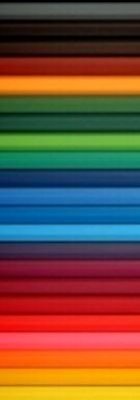
|
The CMYK Color Model - used in color printing
The CMYK color model (process color, four color) is a subtractive color model,
used in color printing, and is also used to describe the printing process
itself. CMYK refers to the four inks used in some color printing: cyan,
magenta, yellow, and key (black). Though it varies by print house, press
operator, press manufacturer, and press run, ink is typically applied in the
order of the abbreviation.
The "K" in CMYK stands for key because in four-color printing, cyan, magenta,
and yellow printing plates are carefully keyed, or aligned, with the key of the
black key plate. Some sources suggest that the "K" in CMYK comes from the last
letter in "black" and was chosen because B already means blue. However,
this explanation, although useful as a mnemonic, is incorrect.
The CMYK model works by partially or entirely masking colors on a lighter,
usually white, background. The ink reduces the light that would otherwise be
reflected. Such a model is called subtractive because inks "subtract"
brightness from white.
In additive color models such as RGB, white is the "additive" combination of
all primary colored lights, while black is the absence of light. In the CMYK
model, it is the opposite: white is the natural color of the paper or other
background, while black results from a full combination of colored inks. To
save money on ink, and to produce deeper black tones, unsaturated and dark
colors are produced by using black ink instead of the combination of cyan,
magenta and yellow.
With CMYK printing, half toning (also called screening) allows for less than
full saturation of the primary colors; tiny dots of each primary color are
printed in a pattern small enough that human beings perceive a solid color.
Magenta printed with a 20% half tone, for example, produces a pink color,
because the eye perceives the tiny magenta dots on the large white paper as
lighter and less saturated than the color of pure magenta ink.
Without half toning, the three primary process colors could be printed only as
solid blocks of color, and therefore could produce only seven colors: the three
primaries themselves, plus three secondary colors produced by layering two of
the primaries: cyan and yellow produce green, cyan and magenta produce a
purplish blue, yellow and magenta produce red (these subtractive secondary
colors correspond roughly to the additive primary colors) plus layering all
three of them resulting in black. With half toning, a full continuous range of
colors can be produced.
Return
|
